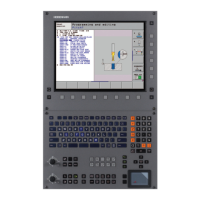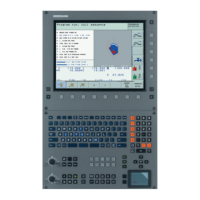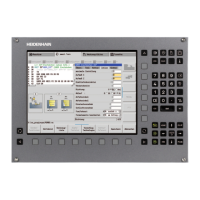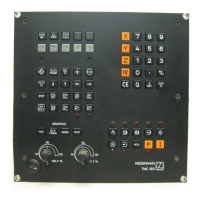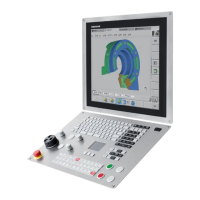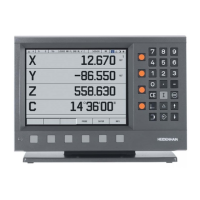July 2010 1 – 647
Nominal and actual
values for the
controllers
The position controller receives its nominal value, e.g., from the NC program; the actual value
is normally provided by a linear encoder (scale). The actual position value can also be provided
by a motor encoder instead of a scale. The position of the machine table depending on the
number of counting pulses or revolutions of the motor encoder is set in the machine parameters
(e.g., one revolution of the encoder changes the table position by 10 mm).
The speed controller receives its nominal value from the position encoder. Thus the output
quantity of the position controller is the input quantity of the speed controller. This is why this
interface is also designated as "nominal speed value interface". With analog axes, the control
leads the nominal speed value interface (± 10V) "outside" to the analog servo amplifier. With
digital axes, this interface is "inside" the control!
The actual value for the speed controller is supplied by the motor encoder.
The current controller receives its nominal value from the speed controller. The actual value is
provided by current sensors in the power module or in the output stage.
Cycle times There is a separate time interval for each control loop:
Position controller cycle time
Time interval during which the interpolation points on the path are calculated
Speed controller cycle time
Time interval in which the actual speed value is compared to the calculated nominal speed
value
Current controller cycle time
Time interval in which the actual current value is compared to the calculated nominal current
value
The cycle times that apply vary depending on the CC used or the CC’s settings.
Figure: Cycle times
Look ahead In order to adapt the feed rate to the workpiece machining process, the iTNC 530 calculates the
geometry ahead of time. This way changes in directions (corners, curvatures, and changes in
curvatures) are detected in time, and the participating NC axes can be braked or accelerated
accordingly.
The number of NC blocks calculated ahead of time can be set by the machine manufacturer
(default setting = 256 blocks).

